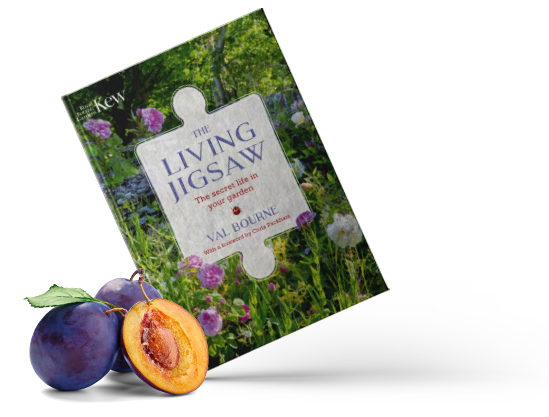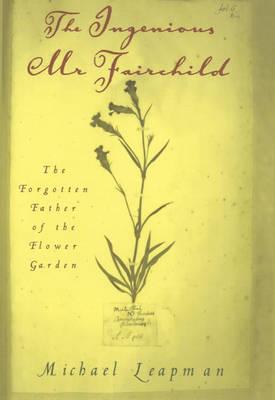Codger is writing this
introduction on Monday ready for publication tomorrow. A dull but blustery day that
has driven him inside. So, very different to last week with its oppressive heat. A month ago we had a rather windy,
though sunnier, week. I got sore eyes working outside,
something I had not previously experienced. Perhaps it was the dust blown about but
having had some help from the optician I have decided to play safe today. So, I
am glad that I had pressed ahead with dividing our bearded irises on Saturday - it took the best part of the day. This
means that we now have a good stock of new plants available to anyone who would like to have a pot from me (they should flower like these in the photo left)
 |
| Japanese water iris: Ensata |
The photo shown here (right) is an
entirely different iris. As you see, it has the most amazingly deep,
velvety purple colour. Last year it flowered exactly three weeks later it has done this year – well
into July. Perhaps that was because it was still settling down. I first learned
about this iris from an article by Alan Titchmarsh. Keen to grow it, I actually redesigned
and re-organised the water garden to get the right conditions. I almost lost the
plant in the winter but the changes seemed to do the trick. To the extent that I
now also have seedlings that are also doing well. Mind you, they may belong to yet another
iris – the yellow flag that grows immediately next to the Ensata. A possible labelling error – well, not so much an error
– read on …
 |
| Yellow flag water iris |
Labelling
Do you find some jobs a chore?
Labelling comes into that category for me. The unplanned success of Codger’s
Nursery ran me out of labels and, for a while, new supplies could not be obtained.
As regular readers will know I resorted to making my own from plastic milk
containers. But whatever material I use, I seem to encounter a a familiar problem: the ink fading or washing
off. I have found this to be a longstanding issue. Different makes of pens have been tried and I am about to
trial another solution: wooden labels rather than plastic. I don't feel too optimistic but, I reckon, it is worth a try. Now, back to the irises
 |
| The variety is something like Jane Phillips |
Irises for you?
As you know, Codger does not charge
for plants. Rather, we encourage our fellow gardeners to make a donation to BCM,
the charity we support. Due to Saturday's efforts we have some excellent irises available – this is just
the time to get them planted. Sadly, I can only take an
informed guess at the variety – probably Jane Phillips (labels again!) - lovely sky blue as in the photograph. As well as being strong and reliable they are scented – not all irises are
 |
| Rhizome cuttings, freshly taken on Saturday |
I have only potted up sound
cuttings – five or six to a pot – so you will be off to a good start
It so
happens that Monty Don did a recent clip on propagating irises. It is an
excellent bit of instruction so rather than spin words here, I shall direct you
to the expert: you can see the BBC video clip by clicking here
Looking at my photos, you will see
that I follow standard practice in trimming the leaves. As Monty explains, you
should only do this when propagating. It helps prevent the young plant being
rocked by the wind. A truly worthwhile precaution as it turns out - Monday has been cold and blustery - not at all pleasant
So, whilst stocks last, you have a
choice: freshly propagated Iris Jane Phillips (or similar) or a water iris
seedling (Ensata or yellow flag). Please let me know if you are interested - we will be glad to help
Good author
Having mentioned two famous
gardeners – Monty Don and Alan Titmarsh – let me introduce Val Bourne. I think
she would come under the category of garden writer rather than garden celebrity.
Indeed, I have never seen her on television, nor have I heard on the radio but
anything I have read of hers has been very worth reading
Her book Living Jigsaw
is excellent – it explains how to garden organically and to encourage wildlife. The book has splendid photographs by Marianne Majerus. Val Bourne sometimes writes for the Telegraph.
You might find her recent article of interest, click here to read it (you may have to navigate the invitation to subscribe to the Telegraph newspaper)
Can you believe such a change in
less than a week? It did not feel too much like summer yesterday but that did
not stop us pretending. Having harvested a plenty of sun-ripened soft fruit we are
currently enjoying the result in the shape of a summer pudding. In case you are
not familiar, let me tell you about this delicacy which even rivals rhubarb and
custard. Any soft fruit can be used. In our case we had lots of raspberries and
redcurrants. Strawberries would also have gone in – but the crop was over.
Instead we had a mixture of loganberries, tayberries and tummelberries. A bit
esoteric, I know – the plants were a Christmas present a few years ago. In they
went as well, and sugar added. Brought to the boil and simmered for a bit
Meanwhile, a basin was lined with white
bread – a fascinating geometrical exercise – and the stewed fruit poured in. Made
a lid of white bread and allowed to stand for 24 hours. Delicious. I could well
be enjoying an extra helping whilst you are reading about it!
Best wishes
from the old Garden Codger
Here is a a few bonus shots. Both pairs show before and after

 This shot was taken on Saturday. It is not quite accurate to say 'before' as work had commenced - it shows the operation mid-stroke. The first clump of irises had been lifted and set down on a plastic sheet to keep things tidy
This shot was taken on Saturday. It is not quite accurate to say 'before' as work had commenced - it shows the operation mid-stroke. The first clump of irises had been lifted and set down on a plastic sheet to keep things tidy
The photograph below shows how the same corner looks today. Looks drastic, I know, but necessary. If irises are left to become congested then flowering is affected. The Monty Don video mentioned above is well worth five minutes viewing time. He does a really clear explanation of what is involved
Please do get in touch if you would like a pot of iris plants. I would like them to be shared around. There is another large clump waiting to be split so I don't expect to run short
I forgot to mention cherries that went into the summer pudding. They are on the right, stones removed. I also forgot that a couple of blackberries were ripe enough to use. Had I got them, blackcurrants would be included, too. That was a result of another labelling error - I have two redcurrant bushes - must put that right
You can also see the loganberries, tayberries and tummelberries - not that they are easily distinguished






















_3.JPG/320px-Primula_denticulata_(Sakhalin)_3.JPG)



















